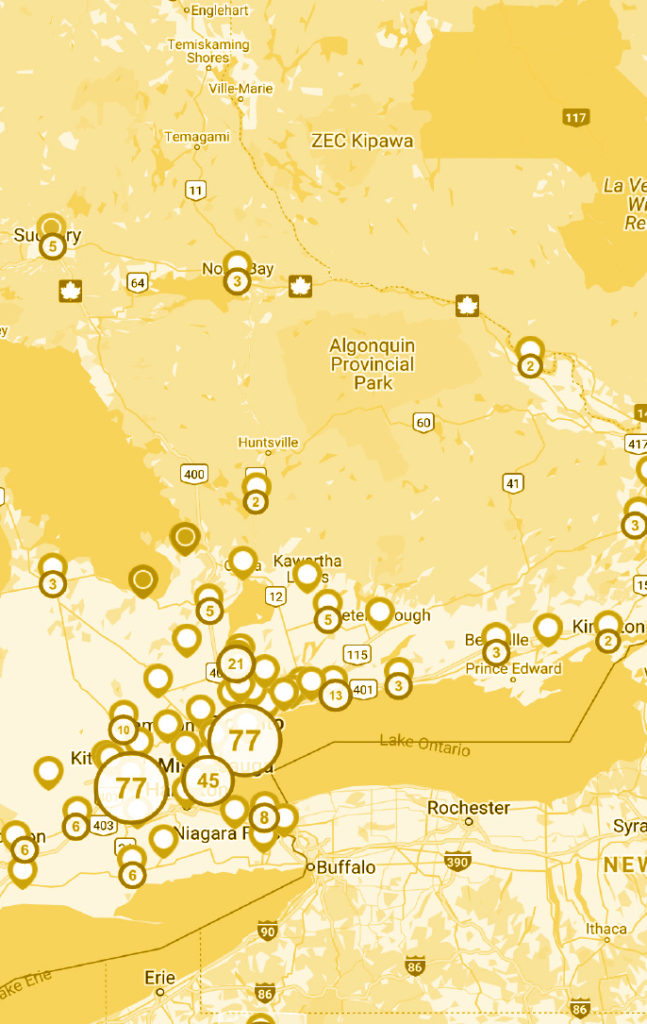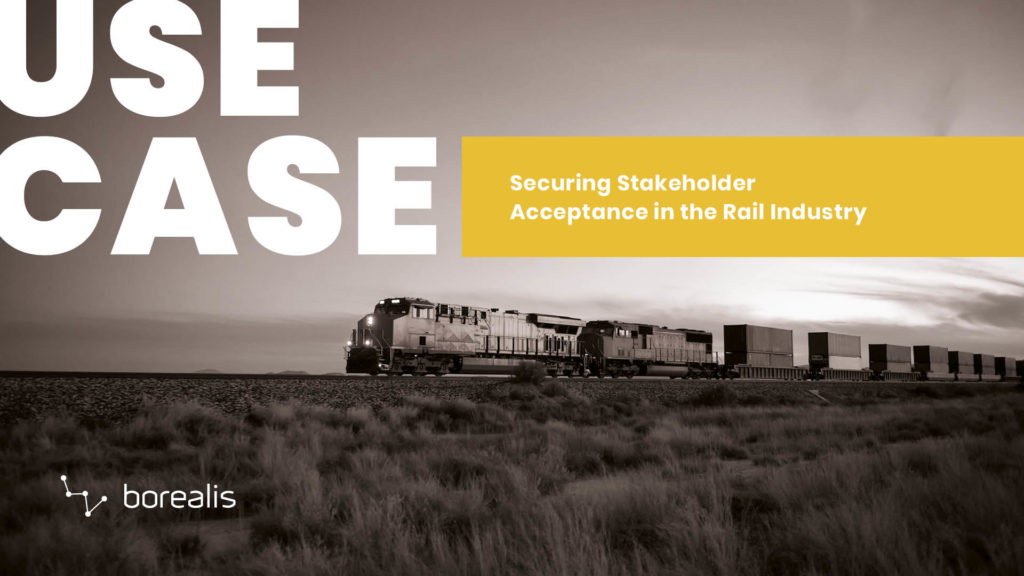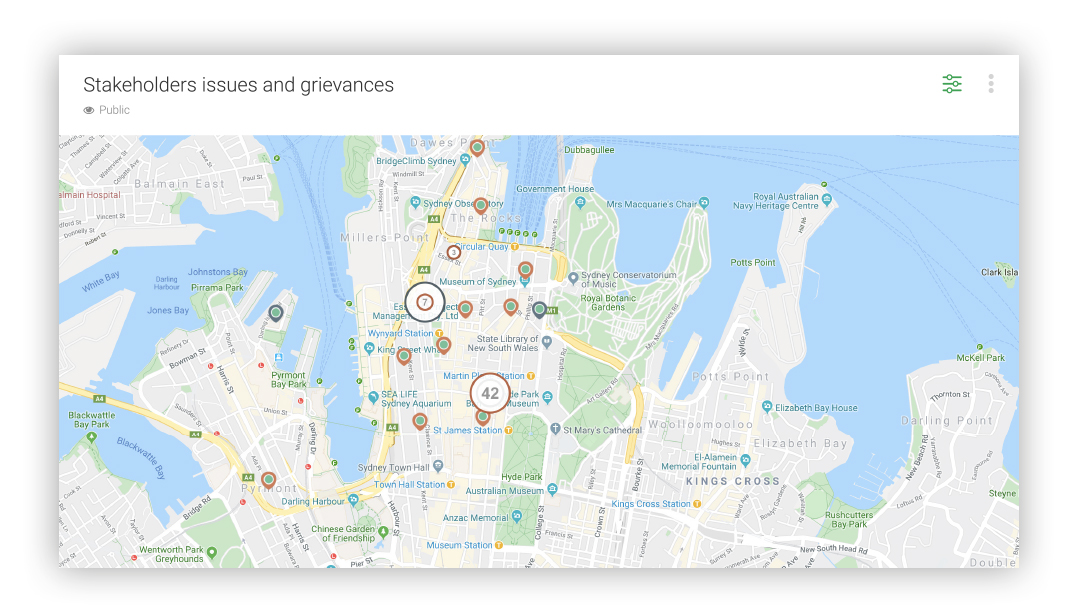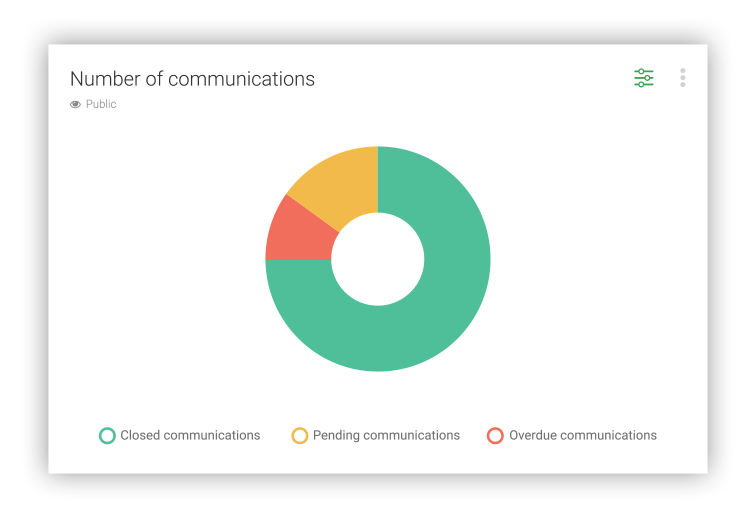USE CASE
Securing Stakeholder Acceptance in the Rail Industry
The challenge
Building on lessons learned
The Government and Community Relations team at a National rail operator is tasked with managing the countless stakeholders that impact – or are impacted by – the thousands of kilometers of track the company owns. These stakeholders include landowners, communities, environmental groups, various levels of government, etc.
As rail projects are planned, built and maintained over time, the team must constantly develop engagement plans for a host of issues and stakeholder groups. The Director of Government and Community Relations needed a way to monitor the impact of different communication strategies developed by the field teams.
She also wanted to improve reporting so that head office could have a clearer view of stakeholder issues and outcomes. These insights would help upper management better appreciate the value the Government and Community Relations team was building for the company.
The solution
Borealis Stakeholder Management Software
With Borealis stakeholder management software, the Government and Community Relations team has greatly improved its stakeholder engagement methodology. The team can now manage all stakeholder relations from a single location – all stakeholder engagement plans, records, communications, outcomes and more.
This information is available 24/7 to those with access, whether they’re at the office or in the field. Customizable dashboards keep key information in easy sight, giving a general overview of the situation in real time. Meaningful reports can be generated in just a few clicks.
Multiple internal teams now use Borealis to globally manage all aspects of stakeholder relations, whether it’s public affairs, land access and management, grievance management, regulatory compliance, etc. The modules, tools and dashboards in Borealis are configured to reflect the specific needs of each team.
Mapping issues and stakeholders for clearer insights and easier project approval
If the Government and Community Relations Director is suddenly asked to produce a ministerial briefing outlining all activities done to date, she can now easily pull up a polished and complete report in Borealis in just a matter of minutes.
The team also uses Borealis to map land assets, issues and stakeholders. Now the team can easily see which issues are most critical in terms of impact and what the action plan is to address them: who’s in charge, what steps have already been taken, what the outcomes are to date, etc. Custom tracking elements like landmarks, mile posts, etc. can also be mapped to pinpoint issues to their exact location.
This mapping also let the team see in advance of any rail work which specific stakeholders will be affected, enabling them to communicate with these individuals to address the issue proactively. For example, the team can let local residents and business owners know that construction work will be happening in their area during certain dates and that some noise is to be expected, but that work crews have been instructed not to start their day before 7 a.m.


The team can choose to send communications through SMS, mails or emails to communicate with the impacted stakeholders, based on their preferred method of communication. Whichever method they choose, the communication will automatically be recorded in Borealis, along with all grievances and follow-up engagement activities – such as the communications informing the contractor to respect work hours.
When a team member leaves on parental leave, a replacement can now look at Borealis to see what the issues are for a given project or section of rail, including what’s been done to date, and what still needs to be done. New team members can simply step in, get an immediate view of the stakeholder landscape and keep going according to plan. There’s no endless emails or Intranet files to search through.
Handling hot-button issues before they become legal problems
In terms of government relations, Borealis also helps the team keep issues at the local level where they are more easily managed. The team can create an engagement plan for informing the fire chief of possible safety risks during construction work. This proactivity reduces the likelihood that the fire chief will escalate any concerns to the mayor, who might then pass them on to the provincial level, which may look at the issue from a political or economic standpoint. Eventually, the grievance may make its way to the federal level, opening the door to potential fines or legislation that legally forces the company to take corrective measures.
The need for visibility at both the local and global level
Having a global view of stakeholder issues is especially valuable in geographically dispersed projects where issues, rules and regulations may vary by region.
For example, uncontrolled vegetation growth can jeopardize the stability of rail lines. Stakeholders in one region may be against the use of pesticides; in another, stakeholders may be more concerned about the risk of derailment and prefer using pesticides over paying workers to manually remove them. Same rail line, same issue, but different stakeholder opinions – not just among local residents, but also elected officials. The team tracks all this in Borealis and uses these insights to feed future engagement plans.
In just a few clicks, the Director of Government and Community Relations can now generate an easily digestible report showing head office what the grievances are for a given section of track, geographic area or for the entire country, as well as which grievances the team was able to deescalate over the last 12 months and what other issues have been identified that the company could act upon to strengthen its brand.
Giving VPs visibility into the local level is also helping the company get projects passed. Borealis allows both ground-level and operational-level teams to easily condense the endless information they have on hand into a brief one-page report with just the key information VPs need to see.






